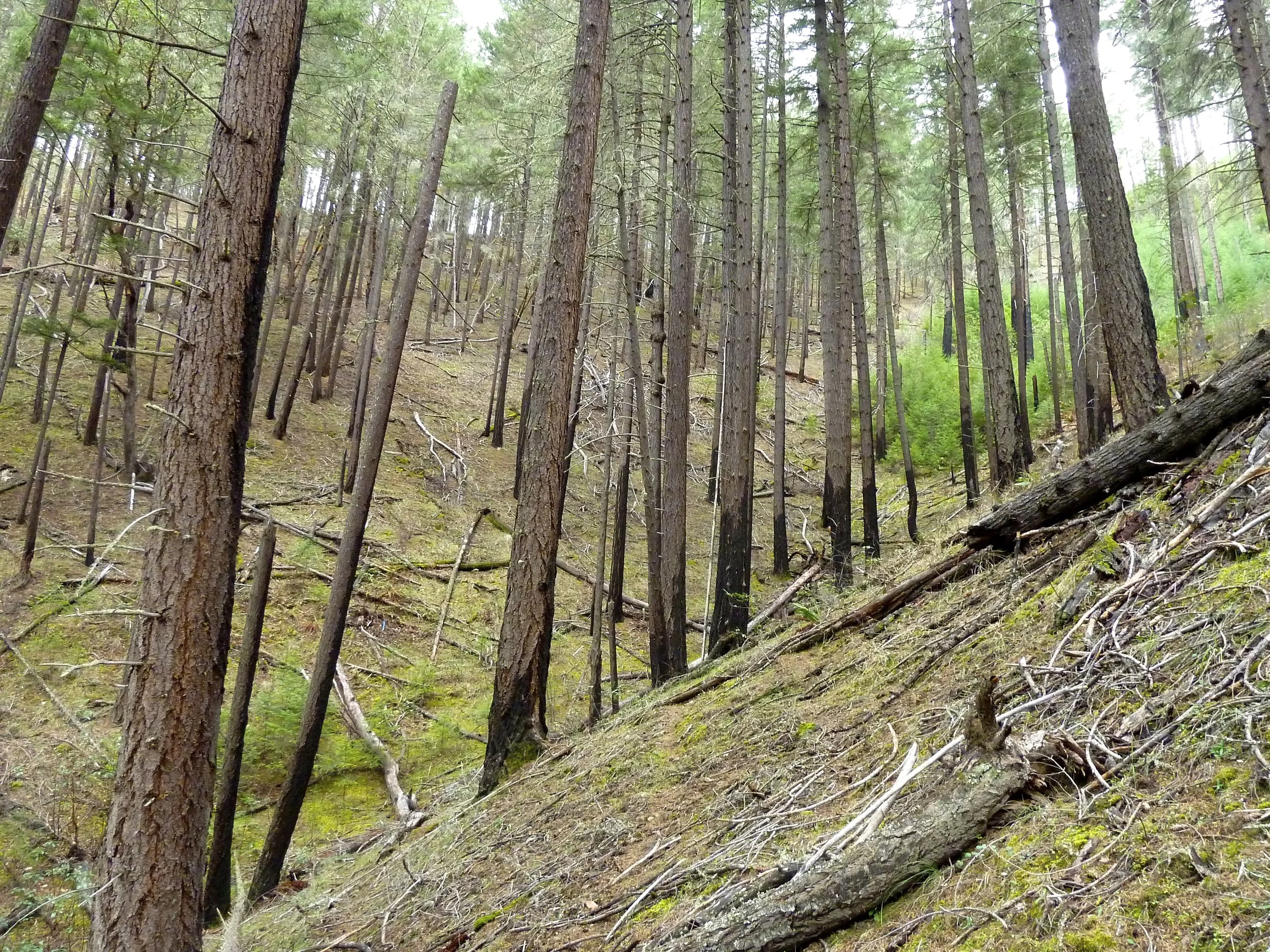Following decades of fire suppression and logging that created dense young forests, a return to ecosystem resiliency requires thinning second-growth plantations, retaining large trees and forest canopy, and returning the role of fire to these fire-dependent forests.
Read MoreIncreasingly timber interests, conservationists including KS Wild, scientists and federal land management agencies are coming together to focus logging activities on thinning previously logged plantations and in fire-evolved forest stands in which fire suppression has resulted in encroachment by less resilient off-site conifers.
Read MoreUnlike most of North America, we are extremely fortunate to live in a region in which five major wildland complexes have thusfar survived the pressures from logging, mining and road construction. It is our job and responsibility to protect these special places for the those who come after us and for their intrinsic value.
Read MoreA suite of species depend on fire for their life cycles. Healthy stands of white and purple Ceanothus burst forth after fire and provide for a suite of pollinators. Knobcone pines love the heat that enables their cones to release seeds. Black- backed woodpeckers thrive by foraging amongst blackened snags. Fire is as necessary as water is to the local forest ecosystem.
Read MoreAfter decades of trapping and poisoning, the last wolf in California was shot in 1924. Since then, roads and highways were built and huge tracts of forest have been converted to industrial tree farms. Today, the wolf re-enters a landscape filled with strip-malls, subdivisions, climatic shifts and severe drought. It will take work with residents in areas where wolves migrate to ensure co-existence.
Read MoreThe forests of the Klamath-Siskiyou Mountains are dependent upon fire. For millennia, lightning storms have ignited blazes that sparked the unique plant communities, tree composition and biodiversity that define the region. Our forests are evolved to accommodate the regenerative force of fire.
Read MoreThe mountains of the Kalmiopsis emerged from the ocean floor as result of geological uplift (rather than volcanism) and have been subject to folding and faulting ever since. As a result, the unique soils are packed with heavy metals including nickel, iron, chromium, and magnesium that make life hard for most plant life. To survive in this environment plants have had to evolve and adapt to get by in circumstances that would normally kill most flowering species. More than any other wilderness in the region, the Kalmiopsis is the home of oddball survivors.
Read More






